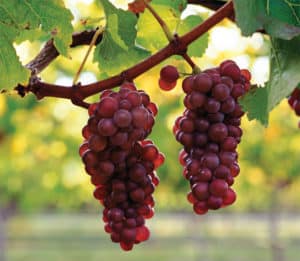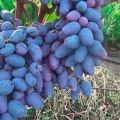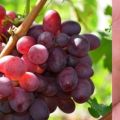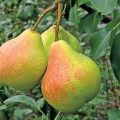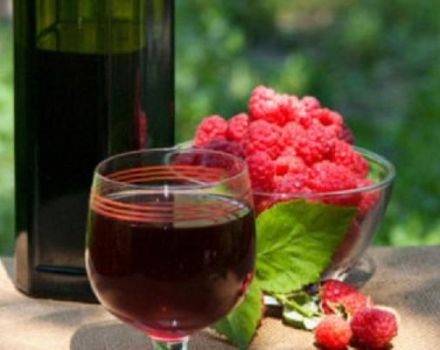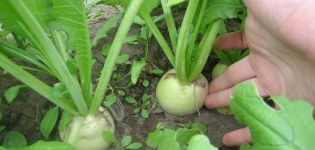Description of grape varieties in Memory of the surgeon, planting and care rules
The hybrid table variety is deservedly loved by farmers and consumers. It takes root well after planting, is immune to winter frosts, and gives a high-quality harvest. Its pink and lilac bunches adorn the backyard, and the berries have a high nutritional value. Wine, juices, compotes, baby food are prepared from grapes in the memory of the surgeon.
History of creation
The hybrid was created by Evgeny Pavlovsky, a specialist at the Potapenko Institute, who studied with the famous Russian scientist and winegrower Ivan Kostrikin. The grapes created on the basis of the Talisman and Mirage varieties are the best and most popular brainchild of a scientist, which has repeatedly received awards at international competitions.
The variety in Memory of a Surgeon was created recently, but managed to fall in love with farmers in all CIS countries. Why Pavlovsky gave his grape such an interesting name, who this mysterious surgeon is is unknown.
Description and characteristics of the variety
The grapes of the memory of the surgeon are included in the category of table varieties intended for fresh consumption. The variety is early maturing, maturity occurs in 120 days.
Bushes are strong, tall. The leaves are three-lobed, at first bright green, acquire a rich tone as the growing season progresses. The bunches are conical, heavy, but the fruits do not adhere very tightly to each other. The bunch weighs from 700 g to 1 kg.
The berries are slightly elongated, weigh 10-12 g. The peel is medium-dense, unripe, green-golden, acquires an even pink color as it ripens, and is covered with a white waxy bloom. The taste is soft, sweet, with a slight sourness. The pulp is juicy. The aroma is nutmeg and strawberry.
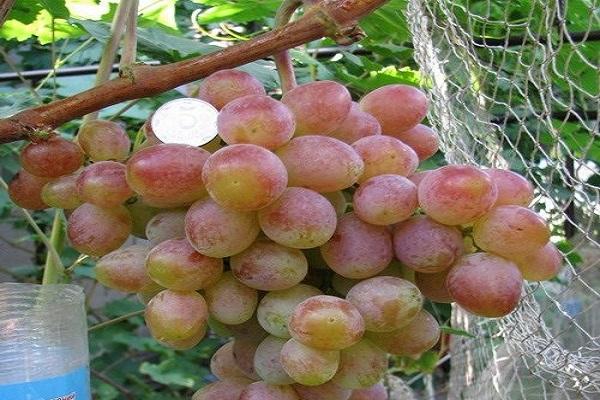
Content of substances that determine taste:
- sugar - 22 g / cm3;
- sugar content - 17-19%;
- acidity - 7 g / l;
- tartaric acid - 0.6% in 1 liter of juice.
The Surgeon's Memory Grade is immune to cold. He is not afraid of frosts down to -23 ° C. At lower temperatures in the growing region, shelter is required.
Also, grapes, subject to proper care, are practically not affected by fungal infection.
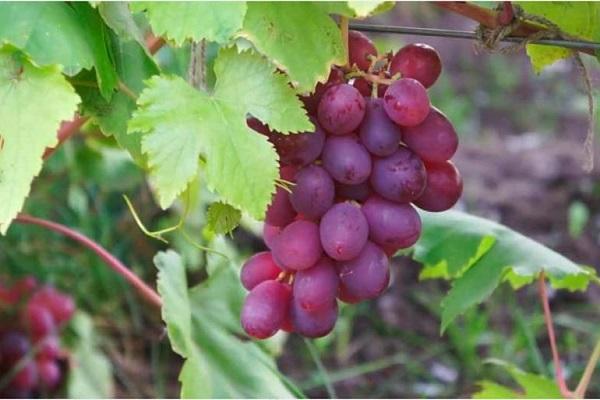
Pros and cons
The Surgeon's Memory Grape is popular for:
- ripens quickly;
- looks beautiful on a personal plot;
- does not lose its presentation during long-term transportation;
- easily takes root, thanks to a strong root system;
- until late autumn it remains in the active phase, due to its low sensitivity to cold.
Of the minuses, it should be noted:
- low ripeness after grafting to another plant;
- susceptibility to the formation of growths;
- high probability of attack by wasps due to the sweetness and aroma of the fruit;
- formation of small berries due to unfavorable conditions or poor care.

Pollinating varieties
If the air temperature is lowered during the flowering period of grapes, then the pollination process is inhibited. As a result, the bunches are sparse, sparse, and the yield is significantly reduced. If the air humidity is high, then due to the moistening of the stamens, the spread of pollen with the air is difficult. Low humidity also negatively affects pollination.
It is impossible to predict weather conditions, so many farmers insure themselves, plant pollinating varieties of raisins next to the grapes in Memory of the surgeon:
- Premier;
- Zaporozhye;
- Moldavian;
- Veles;
- Sprinter;
- Rusball;
- Rylines.
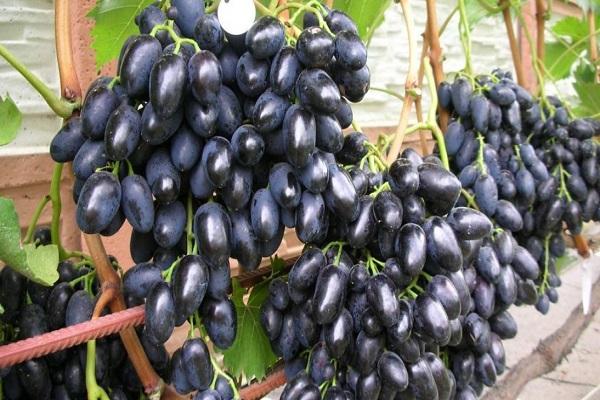
Growing grapes in memory of the surgeon
Grapes grow fully in loose fertile soil. The best option is black soil. But the plant also feels good on sandstone and sandstone, subject to the addition of organic feeding.
Selection of seedlings
In memory of the surgeon - a new kind. Therefore, in order to obtain a high-quality harvest, it is better to buy a seedling, and not to be grafted onto another grape.
The seedling should be picked from a store or nursery, not hand-picked. When buying, you need to carefully examine the roots, the aboveground part. The selected seedling should have strong, developed, undamaged roots without signs of drying out, rot, infection or insects. In a grafted plant, the length of the vine should be up to 45 cm, the roots - about 0.5 m.The seedling should include at least one shoot of at least 10 cm.
You can make a small scratch at the end of the spine. If the inner tissues of a green color open, then such a plant is not worth buying.
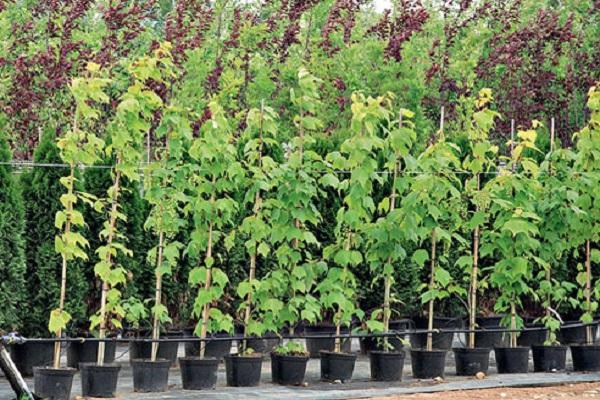
Timing
The grapes in the memory of the surgeon are independently propagated by cuttings or ready-made seedlings are bought. Cuttings are harvested in the fall, kept in a basement or other cool place until spring. In February, they are planted in a container, placed in a warm place for rooting. After the appearance of the roots, they are rearranged to the light.
Grapes are planted in open ground in mid or late May. Some gardeners advise planting the crop in the fall, in mid-September. They argue their opinion by the fact that:
- in the fall, the likelihood of root damage by a fungal infection decreases;
- during the winter the plant will get stronger, in the spring it will begin to actively develop.
The issue of landing time is not critical. Growers are guided by the climatic conditions in the growing region and individual preferences.
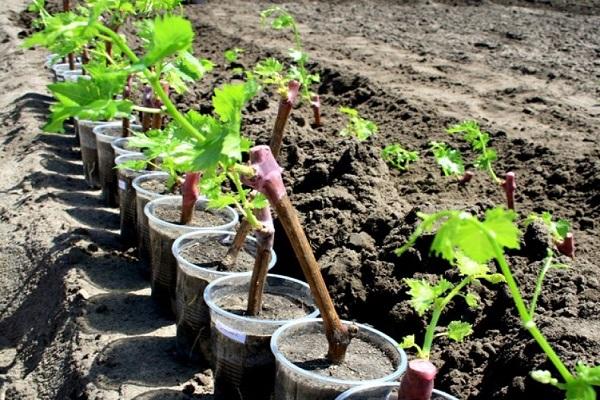
Landing scheme
Grapes are planted in the Memory of the surgeon according to the standard algorithm:
- Dig a hole suitable for the volume of the roots, 80 cm deep.
- Drainage is done at the bottom. On top of it, earth with humus is poured into a third of the depth of the hole.
- The day before planting, the seedling is placed in a container with water. A few hours before the procedure, a root growth stimulator is added to the water.
- The seedling is placed in the hole so that the root collar rises slightly above the soil surface.
- The hole is buried. A mound about 15 cm high is made around the root collar.
- The grapes are tied up, fed with a small portion of mineral fertilizers and organic matter.
- The earth is watered. To preserve soil moisture, mulching with sawdust or moss is carried out.
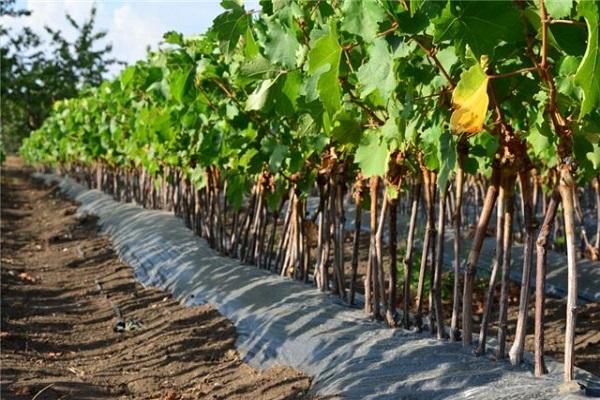
Grape care tips
Taking care of grapes is easy. Care cannot be ignored, since the yield and quality of the fruits depend on it.
Watering and feeding
According to the recommendation of the creator of the variety, watering according to the standard scheme: before flowering and after the withering of flowers.
Bush formation
The grade in Memory of the surgeon is quite strong and tall. Therefore, young bushes are cut for 4-5 buds, adults - for 6-8.
Grapes tend to build up a lot of greenery.Therefore, pruning excess shoots is an obligatory stage of care during the active growing season.
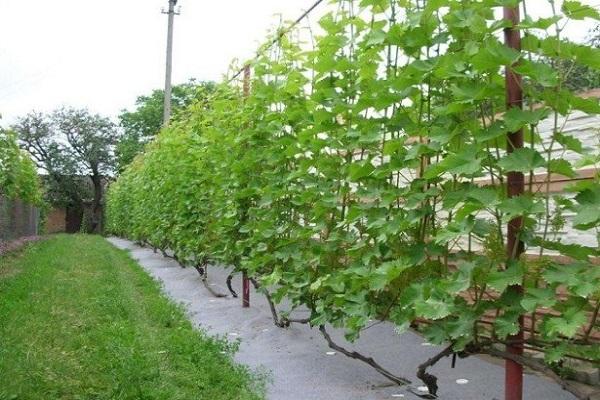
Preparing for winter
Despite the winter hardiness of grapes, in regions where the winter air temperature drops to -20 ° C, an insulating shelter is required.
But don't cover up too early. The grapes of the memory of the surgeon remain in an active state until the very frost, under the covering material it vomits out. Therefore, they cover it when a stable air temperature of about -5 ° C is formed.
Disease and pest control
The variety in Memory of the Surgeon is resistant to fungal infection, but if care is taken, the plant can get sick with mildew, gray mold, powdery mildew. Moreover, the fungal infection is usually intense.
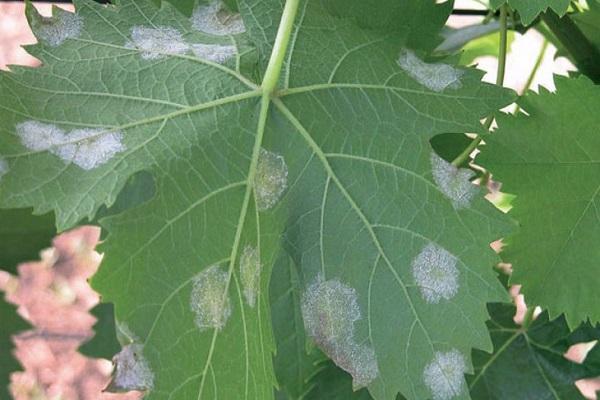
The main treatment is the use of fungicides. Spraying is carried out 3 times:
- when the shoots reach a length of 15 cm;
- before flowering;
- when forming pea-sized berries.
For the prevention of infectious pathologies, the soil is mulched, fertilizing with a mineral complex is carried out, shoots are cut off in time and weeds are removed.
Of insects, mites and phylloxera can attack grapes. Insecticides are used against ticks. Only insecticidal prophylaxis is applicable against phylloxera, it is impossible to get rid of the parasite - the diseased plant is dug up and burned.
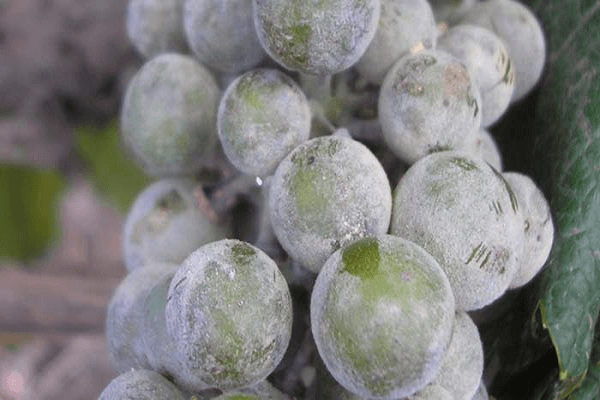
Harvesting and storage
Grapes are harvested in late August and early autumn. The berries hang on the branches for a long time without losing their presentation. Maturity is determined by the color of the skin, waxy bloom, sweet taste of the pulp, easy separation of the berry from the stalk.
The grapes are harvested in clear dry weather. The bunch is cut off with pruning shears or garden shears, trying not to damage the fruits, not to wipe off the plaque from them. Otherwise, the shelf life of the crop will be significantly reduced. Before storage, dried and rotten fruits are removed.
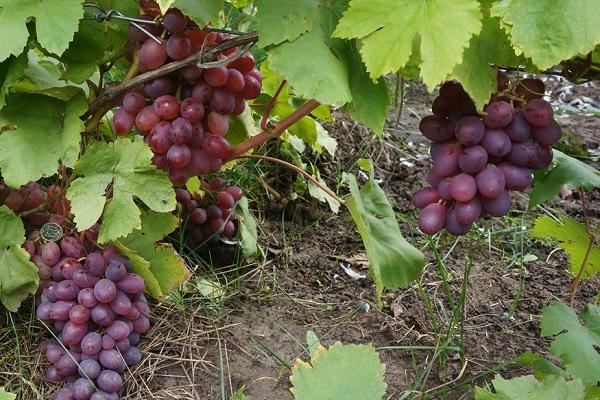
The grapes are stored in a non-damp cellar or other cool ventilated room, the temperature in which does not exceed +4 ° C. If the harvest is small, then you can put it in the refrigerator. The best storage method is in wooden boxes. The bunches are laid in one layer, covered with sawdust. You can also hang grapes on a wire.
The surgeon's memory grape is good because it is stored for a long time without losing its taste and presentation. It is not subject to decay, flattening, cracking.

